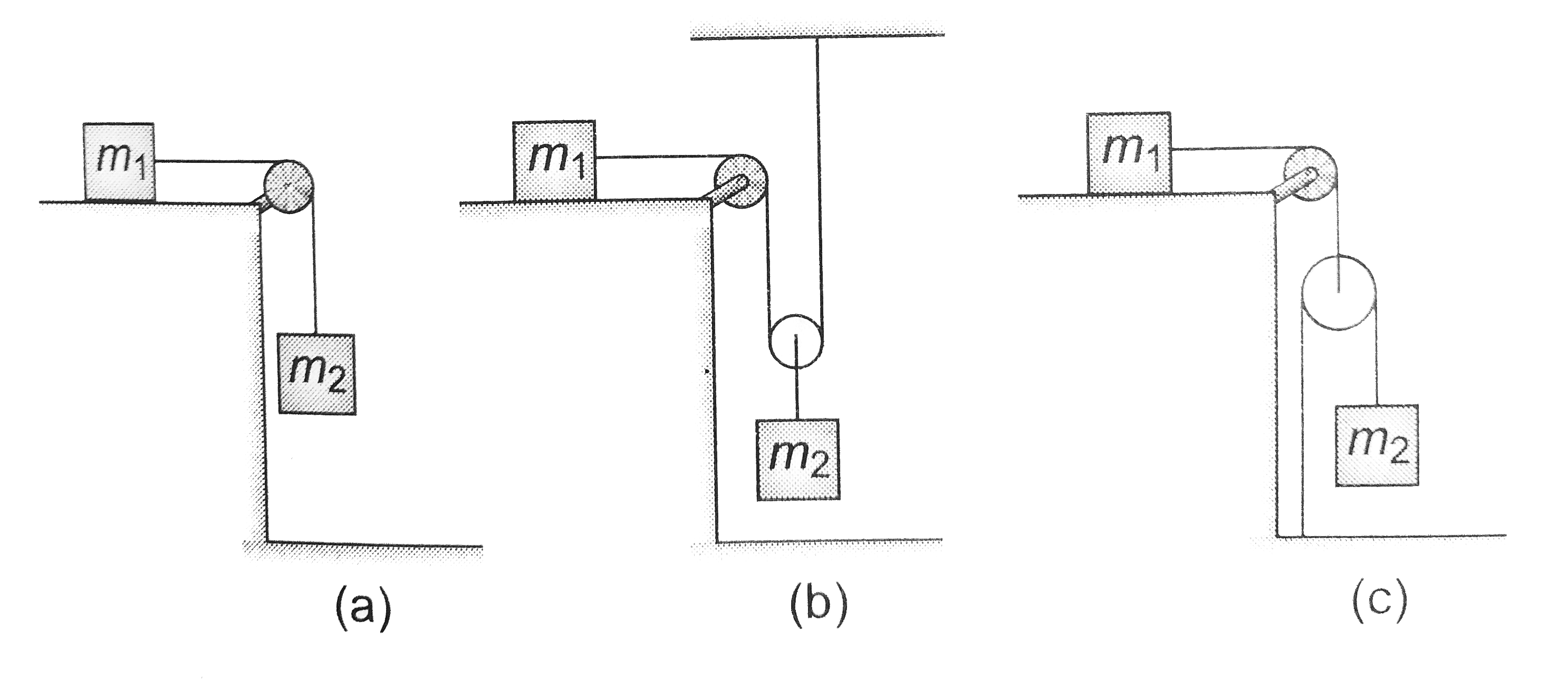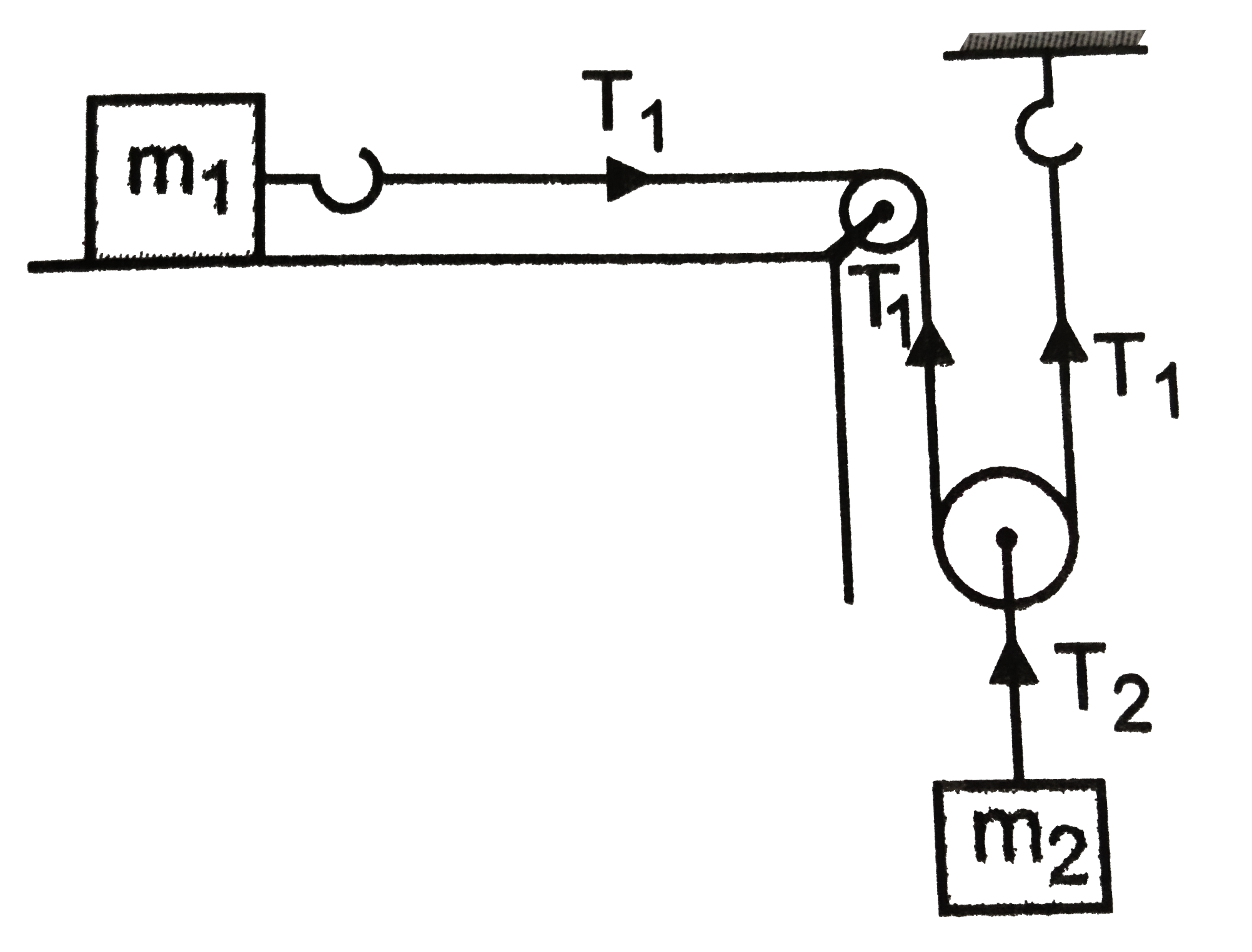In each of the three arrangements, the block of mass m1 is being pulled left with constant velocity. There is no friction anywhere. The string are light and anextensible and pulleys are massless. The ratio of the speed of the block of mass m2 in the three cases respectively is:

2:1:4
2:4:1
4:2:1
Connot be calculated
The correct Answer is:A
v1:v2:v3=1:0.5:2=2:1:4 . 
Topper's Solved these Questions
- NEWTONS LAWS OF MOTIONBook:A2ZChapter:NEWTONS LAWS OF MOTIONExercise:Assertion Reasoning
Explore 14 Videos
- NEWTONS LAWS OF MOTIONBook:A2ZChapter:NEWTONS LAWS OF MOTIONExercise:NEET Questions
Explore 38 Videos
- NEWTONS LAWS OF MOTIONBook:A2ZChapter:NEWTONS LAWS OF MOTIONExercise:Dynamics Of Circular Motion
Explore 31 Videos
- MOTION IN TWO DIMENSIONBook:A2ZChapter:MOTION IN TWO DIMENSIONExercise:Chapter Test
Explore 29 Videos
- OSCILLATION AND SIMPLE HARMONIC MOTIONBook:A2ZChapter:OSCILLATION AND SIMPLE HARMONIC MOTIONExercise:Chapter Test
Explore 29 Videos
Similar Questions
In the arrangement , shown below pulleys are massless and frictionless and threads are inextensible , block of mass m1 will remain at rest if

View SolutionIn the following diagram a massless pulley is pulled by a constant force of magnitude P. There is no friction between the block and the floor. The acceleration produced in the block of mass m is

View Solution
Knowledge Check
In the arrangement shown below, pulleys are mass-less and friction-less and threads are in-extensible. Block of mass m1 will remain at rest if :
 A4m1=1m2+1m3Bm1=m2=m3C1m1=1m2+1m3D1m2=2m2+3m1
A4m1=1m2+1m3Bm1=m2=m3C1m1=1m2+1m3D1m2=2m2+3m1A block of mass m is being pulled up a rough incline by an agent delivering constant power P. The coefficient of friction between the block and the incline is μ. The maximum speed of the block during the course of ascent is
 A(a) Pmgsinθ+μmgcosθB(b) Pmgsinθ−μmgcosθC(c) 2Pmgsinθ−μmgcosθD(d) 3Pmgsinθ−μmgcosθ
A(a) Pmgsinθ+μmgcosθB(b) Pmgsinθ−μmgcosθC(c) 2Pmgsinθ−μmgcosθD(d) 3Pmgsinθ−μmgcosθA block of mass m is pulled by a constant powert P placed on a rough horizontal plane. The friction coefficient the block and surface is μ. The maximum velocity of the block is.
ApmgBμpmgCpμmgDpN2/mg
Three blocks of masses m1,m2andm3 are connected as shown in the figure. All the surfaces are frictionless and the string and the pulleys are light. Find the acceleration of m1

View SolutionWhen we ignore friction and mass of pulley what would be the accelerations of the two blocks m1 and m2
 .
.
View SolutionFind the relation between acceleration of the two blocks m1andm2. Assume pulleys are massless and frictionless and the strings are inextensible .

View SolutionFind the mass of the hanging block in which will prevent the smaller block of mass m from slipping over the triangular block of mass M. All the surfaces are frictionless and the strings and the pulleys are light

View SolutionFind the acceleration of the block of mass m. Assume pulleys are massless and frictionless.

View Solution

